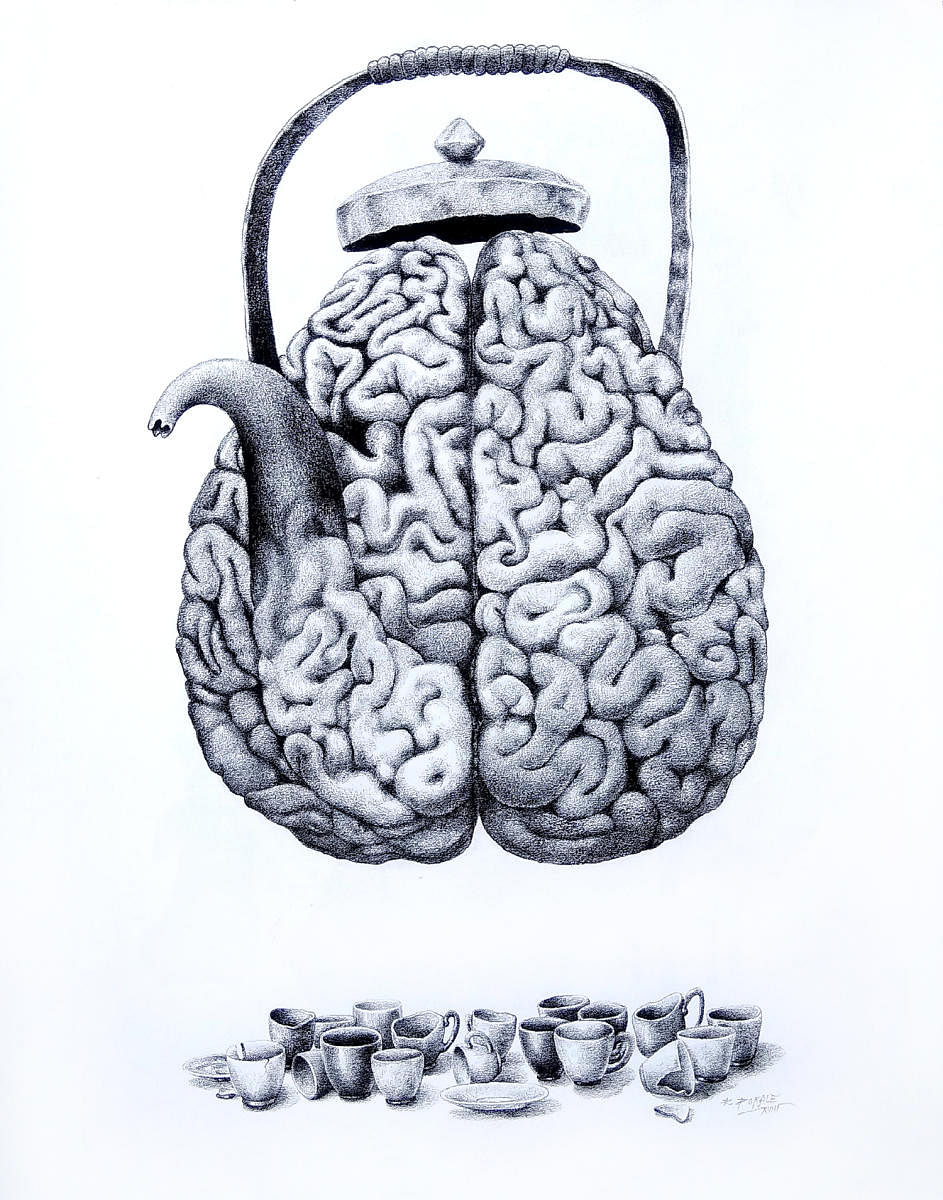In every art practice, drawing is an essential starting point but not an end in itself, and is often traded at a later stage for the lure of acrylics or even installations. For artist Ramchandra Pokale, drawing has become a back-to-the-roots activity, wherein he vouches, “the balanced power of a painting can be equally expressed in a drawing.”
Having just completed a prestigious group show at the Jehangir Art Gallery in Mumbai, followed by another at the Open Palm Court Gallery in Delhi, and a commemorative work for display at the Indira Gandhi National Centre for the Arts, Delhi, (IGNCA), Pokale surmises that the texture, colour palette, strokes of a brush, and even a sprint of experimentation find common purpose when he sits at the drawing board, pencil in hand.
An artist who had hitherto expressed himself through themes such as coming of age, puberty and the legendary attraction of the opposites found himself drawn to urban themes in the guise of the ubiquitous tea boy seen at countless tea stalls. Known for his acrylic works, where the grainy textural backdrops complement the graphic figures in the foreground, the artist has ingrained his pencil works with the same textures, “drawing the eye closer into the depth of the image,” he deduces.
The figures in his present body of works, though postured front-face, in a pair of shorts holding the trademark kettle, have a singular distinction of being faceless, as that feature is overpowered by a giant kettle, ingrained with light and heavy strokes — the shaded effect contrasting the whiteness of the untouched surface and expressive of the stark contrast surrounding the protagonist.But the artist has many ways of deviating the mind from his subject’s mundane credentials.
Down to the 'T'ea
In some works, the tea boy is immersed into a chequer board of black-and-white squares, where his presence can be likened to that of a mere pawn. In another, his identity is likened to a bar code, while elsewhere, the tea kettle reigns in solitary splendour, its surface convoluted into a brain-like mapping, quite removed from the conglomerate of tea cups, some cracked and broken, as if to suggest the existence of the weak and the strong, the singed and the unhurt, occupying the same surface.
As one turns over the sheets of black-and-white works on display, the kettle begins to overtake its master. It embraces a female form, consummated in a narcissistic love of its own kettle-like image. Elsewhere, the responsibilities of the little boy become a mere backdrop as his mind is laid bare in full view of the conscious and unconscious sightings crowding into the kettle-brain space.
His dreams are encased in the symbolic kettle, making the object transgress from being an object of daily earnings to one that is his escape route into a dream world.
The flock of flying butterflies emitting from the spout seem to suggest thoughts to that end.
What the artist has realised through his new-found medium is not just the possibilities that the pencil throws up, but also that a medium, however humble, can be made into a telling mouthpiece through a correct synthesis of technique and thought process.
